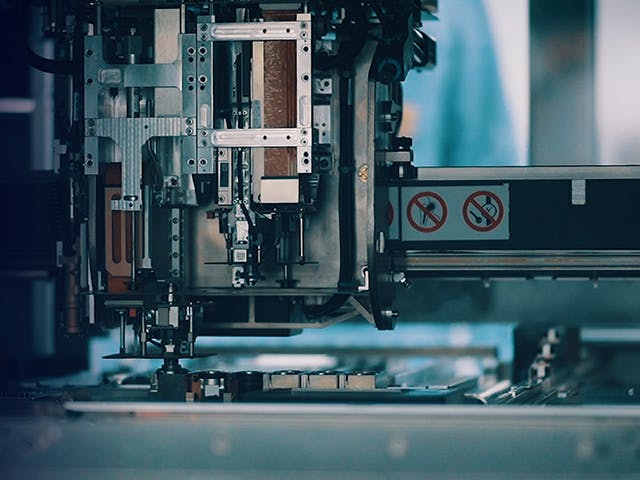Auftragsbasierte Planung mit mehreren Randbedingungen
Erstellen Sie auftragsbasierte Zeitpläne. Ordnen oder gewichten Sie Artikel, um Aufträge zu priorisieren. Sequenzierungsalgorithmen berücksichtigen die Ressourcenverfügbarkeit und zusätzliche Randbedingungen, die der Auftrag erfordert. Zeitpläne können unterschiedliche Ausführungsgeschwindigkeiten für Ressourcen berücksichtigen. Wenden Sie sequenzabhängige Umrüstzeiten basierend auf den Attributen eines Vorgangs an und lassen Sie Überschneidungen und Pufferzeiten zwischen den Vorgängen zu.
Modellierung und Optimierung von Randbedingungen für Ressourcen
Modellieren Sie erweiterte Randbedingungen für Ressourcen, z. B. Regeln für die Anwendung konkurrierender Regeln. Zu den erweiterten Randbedingungen für verschiedene Vorgänge gehören Begrenzungen der Zeit zwischen den Vorgängen und die mögliche zeitliche Verlängerung eines Vorgangs. Durch Optimierung der fortgeschrittenen Planung können Sie zusätzliche Regeln zur Zeitplanoptimierung definieren, um auf Probleme wie Minimierung von Rüstzeiten, bevorzugte Reihenfolgen und Bereitstellung zu reagieren.
Modellierung des Materialverbrauchs
Implementieren Sie benutzerdefinierte Regeln für den Materialverbrauch, um sicherzustellen, dass Unterbaugruppen und Rohstoffe gemäß den Geschäftsregeln verwendet werden. Bei der Zuteilung von Materialien filtert und ordnet das System die Daten so, dass qualitätsbezogene oder kundenspezifische Randbedingungen bei der Materialnutzung berücksichtigt werden können.
Visualisierung des Produktionsprozesses
Visualisieren Sie den Produktionsprozess vom Rohstoff bis zum fertigen Produkt und Kundenauftrag. Der Material-Explorer in Opcenter Scheduling zeigt eine grafische Ansicht der Materialabhängigkeiten sowie Diagramme der Lagerbestände im Zeitverlauf an. Sehen Sie, wo Engpässe auftreten werden, und entscheiden Sie, ob Sie diese als Randbedingung beibehalten oder ignorieren möchten.
Zeitplänen anzeigen und Auftragsfortschritt verfolgen
Der Vertrieb verwendet Viewer, um den Fortschritt von Aufträgen zu verfolgen. Führen Sie Auftragsabfragen anhand einer schreibgeschützten Kopie des veröffentlichten Zeitplans durch. Das Management kann die tatsächlichen Zeiten mit den geplanten Fertigstellungszeiten vergleichen, um die Leistung des Produktionsprozesses zu bewerten. Im Fertigungsbereich können Zellenleiter oder Maschinenbediener den Viewer verwenden, um minutengenaue Aufgabenlisten anzuzeigen.




